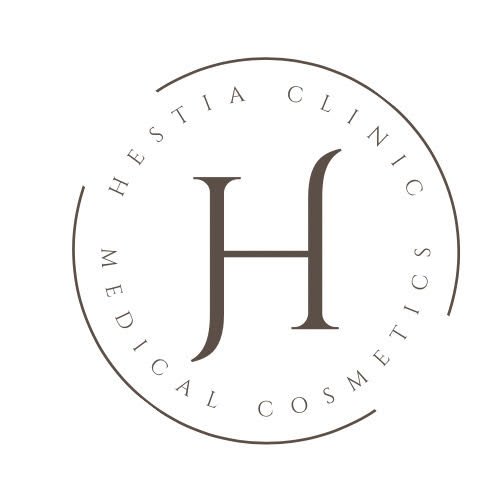The importance of SPF and what you can do for existing sun damage
The era of weekly sunbeds and hazardous tanning oils is behind us - we hope. In 2024, the focus is on caring for your skin and shielding it from the elements to prevent premature ageing and other risks. As summer is (finally) upon us, we are here to remind you why SPF is just about the most important part of your skincare routine - but remember, just like ‘a dog is not just for Christmas’, sunscreen is not just for Summer! UV rays can penetrate through clouds and windows, making it essential to wear SPF regardless of the weather and temperature and even when indoors.
How does UV damage my skin?
Ultraviolet (UV) radiation from the sun damages the skin in several ways:
DNA Damage : The sun produces UVA & UVB rays - both of which penetrate the skin and directly damage the DNA skin cells, which can lead to melanoma.
Protein and Lipid Damage: UV radiation can alter the structure of proteins and lipids in the skin, affecting cell membranes and impairing cellular functions. This contributes to skin ageing and reduces the skin's ability to repair itself.
Collagen and Elastin Breakdown: UVA rays break down collagen and elastin fibres in the dermis, leading to loss of skin elasticity, wrinkles and sagging.
Hyperpigmentation: UV radiation stimulates the production of melanin, the pigment responsible for skin colour, leading to tanning. However, excessive UV exposure can cause uneven pigmentation, such as dark spots and patches.
This may sound daunting, but don't worry—whether you've been a long-time sun worshipper or are just starting with daily SPF, there are steps you can take now to protect your skin and even reverse signs of sun damage.
Finding the right SPF for your skin
SPF (Sun Protection Factor) works by forming a protective barrier on the skin that absorbs and reflects ultraviolet (UV) radiation from the sun. It helps to prevent UVB rays from penetrating the skin deeply, reducing the risk of sunburn and long-term skin damage such as premature ageing and skin cancer - but how do you know which is the right SPF for effectively protecting you whilst also being kind to your skin?
At The Hestia Clinic, we would always recommend choosing a physical, medical grade sunscreen over a chemical sunscreen. Physical SPF offers immediate broad-spectrum protection against UVA and UVB rays. It contains ingredients like zinc oxide and titanium dioxide, which create a barrier on the skin to reflect and scatter UV rays. Physical sunscreens are also much gentler on sensitive skin, less likely to cause irritation.
How to find the right treatment to reverse sun damange
Medical grade skin care
As well as protecting your skin going forward using a physical SPF, there are a number of homecare products that you can introduce into your routine to help reverse pigmentation caused by sun damage. As these are medical grade products they offer more potent, tested solutions for specific issues, so would require professional advice. If you’d like to book a consultation to discuss which skincare products can help achieve your goals just click the link below to book in with one of our expert practitioners.
In clinic treatments
As well as homecare, there are a number of in clinic treatments we provide at The Hestia Clinic to treat sun damage, pigmentation and melasma;
Chemical Peels
Chemical peels can address various signs of sun damage, such as fine lines, wrinkles, and uneven skin tone. By promoting new skin regeneration and accelerating natural exfoliation, peels help diminish sun-induced aging and enhance overall skin health. Peels with ingredients like glycolic acid, salicylic acid, lactic acid, and trichloroacetic acid (TCA) can lighten dark spots and reduce hyperpigmentation. These acids break down melanin clusters responsible for pigmentation issues.
Microneedling
Microneedling creates small, precise micro-injuries in the skin, which stimulate the body's natural healing response. This boosts collagen and elastin production, resulting in improved skin texture, reduced fine lines and wrinkles, and enhanced repair of sun-damaged skin. The accelerated cell turnover and improved absorption of skincare products also aid in breaking down melanin clusters, thereby diminishing hyperpigmentation
Skin Boosters
Treatments such as Profhilo, Seventy Hyal and Polynucleotides are primarily known for their rejuvenating and hydrating properties rather than specifically targeting sun damage. However, they can help improve the appearance of sun-damage by enhancing hydration, promoting collagen production, and improving overall skin quality. By deeply hydrating the skin, they help improve its barrier function and support its natural repair processes, which can aid in healing sun-damaged skin.
At Hestia, we recognize the uniqueness of every individual's skin, which is why we emphasise customised treatment plans that address your specific concerns. Our approach is bespoke rather than one-size-fits-all. We strongly advise scheduling a skin analysis and consultation with one of our skilled professionals to start your journey toward achieving your skincare goals effectively




